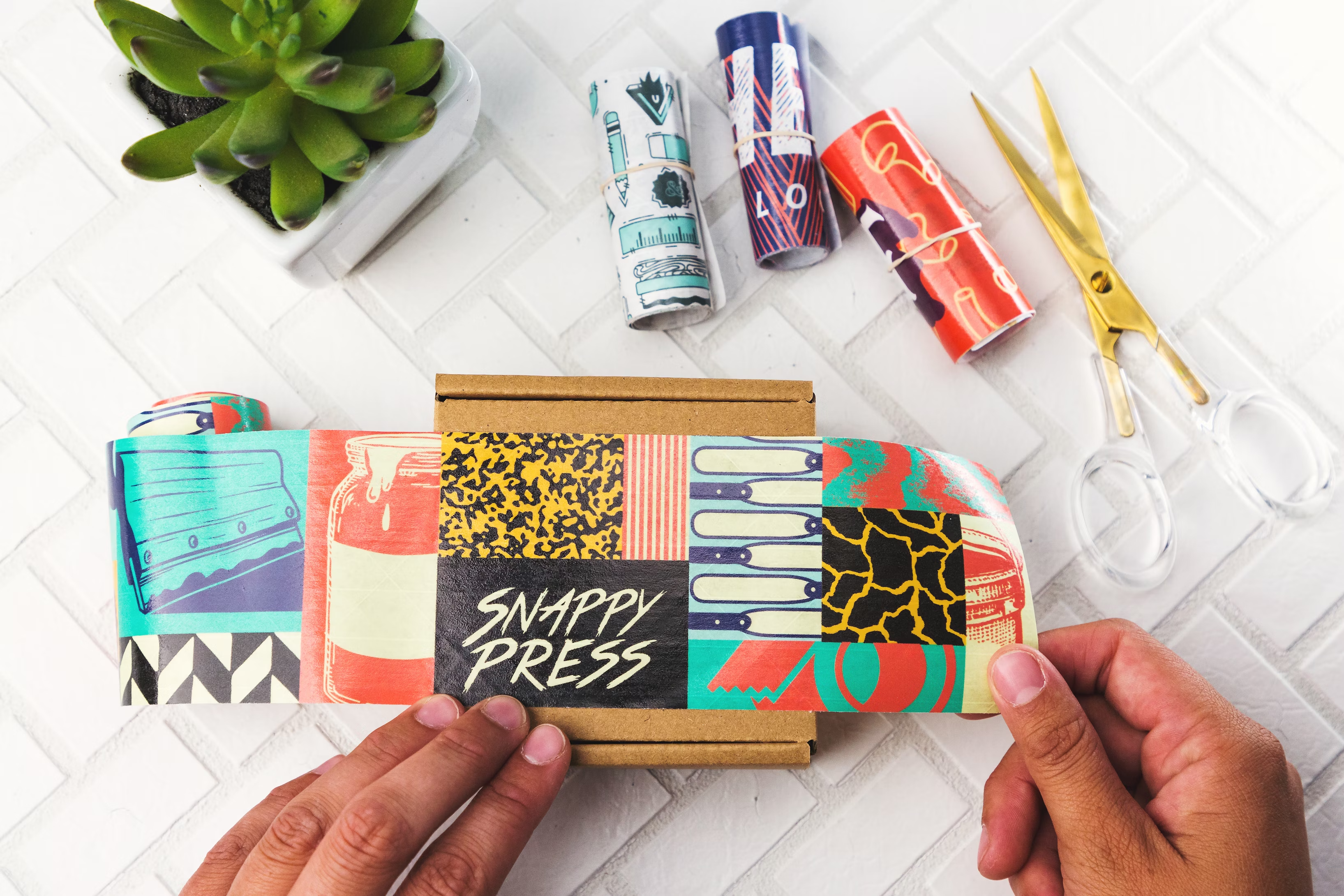Packaging design is crucial in today’s market. It helps products stand out and creates a lasting impression. More than just a cover, packaging is part of a brand’s identity. Brand identity includes the visual and emotional elements that make a brand unique. This article explores how packaging design affects brand identity. It looks at different elements, psychological effects, and design challenges.
The Role of Packaging Design in Marketing
Packaging should look intentional. So, the design involves creating visual and structural elements for a product. This includes colors, fonts, materials, and shapes. In the past, packaging was mainly functional, protecting products during transport and storage. Now, packaging design is a key marketing tool.
Today, packaging design is essential for brand identity packaging. It serves as both protection and communication. Good packaging design conveys a brand’s message, values, and personality. It also attracts customers. For example, a sleek design might suggest a high-end product, while a playful package could appeal to younger people.
Packaging design impacts many industries, including food packaging design. The look of a product can influence buying decisions. Effective design can create an emotional connection with consumers. A well-designed package can tell a story and build brand loyalty. Resources like a writing paper website can provide tips on combining visual appeal with functionality in packaging design.
Elements of Effective Packaging Design
Creating effective packaging involves balancing several elements. Visual appeal is crucial because it’s the first thing consumers notice. Colors, fonts, and images should match the brand’s identity and attract the target audience. Bright colors and bold fonts can stand out on crowded shelves, while subtle colors and elegant fonts can convey luxury.
Functionality is also important. Packaging must protect the product, be easy to use, and consider sustainability. With growing environmental concerns, consumers prefer eco-friendly packaging. Brands that use sustainable materials and designs improve their image among green consumers.
Innovative features in product packaging design can set a brand apart. Unique shapes, interactive elements, or smart packaging (like QR codes) enhance the user experience. These features make a product memorable and reinforce brand identity.

Psychological Impact of Packaging Design on Consumers
Packaging design has a big psychological impact on consumers. First impressions form quickly and affect how consumers see the brand and product. A well-designed package can inspire confidence and interest, while a poorly designed one can turn buyers away.
Packaging design influences consumer behavior through visual cues like color, shape, and images. These cues can evoke specific emotions and associations. For example, green packaging suggests health and sustainability, while black implies luxury. Brands that understand these triggers can create designs that connect with their audience and drive sales.
Case studies show the success of thoughtful packaging design. Coca-Cola’s bottle shape and red color are instantly recognizable and evoke happiness. Apple’s minimalist packaging design reflects simplicity and innovation, reinforcing its premium image. These examples show how packaging design is key to brand identity packaging.
Packaging Design and Brand Recognition
Consistent packaging design is vital for building brand recognition. Logos, brand colors, and design consistency create a cohesive brand image. When consumers repeatedly see the same visual elements, they associate them with the brand, building familiarity and trust.
For instance, Tiffany & Co.’s blue box signifies luxury and elegance, while McDonald’s golden arches are recognized worldwide. These brands use consistent packaging design to strengthen their brand identity and market presence.
Maintaining consistency across products and packaging formats ensures that all aspects of a brand’s packaging and branding efforts work together. This creates a seamless brand experience, whether consumers encounter the brand in a store, online, or through advertising.
Cultural and Social Influences on Packaging Design
Cultural and social influences shape packaging design. Different cultures have different preferences and expectations. For example, in Japan, intricate and pleasing packaging is highly valued. In Western countries, consumers may prioritize functionality and sustainability.
Social trends also influence packaging design. The focus on sustainability has led to more eco-friendly packaging solutions. Brands now use biodegradable materials, recyclable packaging, and simple designs to reduce waste. These efforts attract environmentally conscious consumers and improve the brand’s image.
Adapting packaging design for global markets requires understanding cultural nuances and consumer preferences. Brands must balance consistency with flexibility to cater to regional tastes. This cultural sensitivity leads to more effective packaging and branding strategies.
Challenges and Considerations in Packaging Design
Designers face several challenges in creating effective packaging. Balancing aesthetics with functionality is a major concern. A visually appealing package must also protect the product, be easy to handle, and meet industry regulations. Achieving this balance requires careful planning.
Environmental considerations add complexity. Brands must follow regulations, which often include strict requirements for materials, labeling, and disposal. Meeting these standards while maintaining an attractive and functional design is challenging but essential for compliance and consumer satisfaction.
Cost implications are also significant. Innovative packaging solutions can be expensive. Brands must weigh the benefits of unique designs against the costs. Investing in high-quality packaging can enhance brand perception and build consumer loyalty.
Conclusion
In conclusion, packaging design is a powerful tool that shapes brand identity and influences consumer behavior. Effective packaging design creates a strong first impression and builds long-term brand recognition. It involves balancing visual appeal, functionality, and innovation. Cultural and social influences also play a key role.
As the market changes, brands must keep up with trends and consumer preferences. Sustainable and eco-friendly packaging is now essential. It meets the demands of an environmentally conscious public. Brands that embrace these changes and innovate can strengthen their identity and stay competitive.
For businesses looking to improve their packaging design, research paper writing services can be valuable. These services offer detailed analyses and expert advice on trends and best practices. They help brands create packaging that protects products, tells a story, and captivates audiences. By focusing on effective packaging design, brands can enhance their image and build strong connections with consumers.
